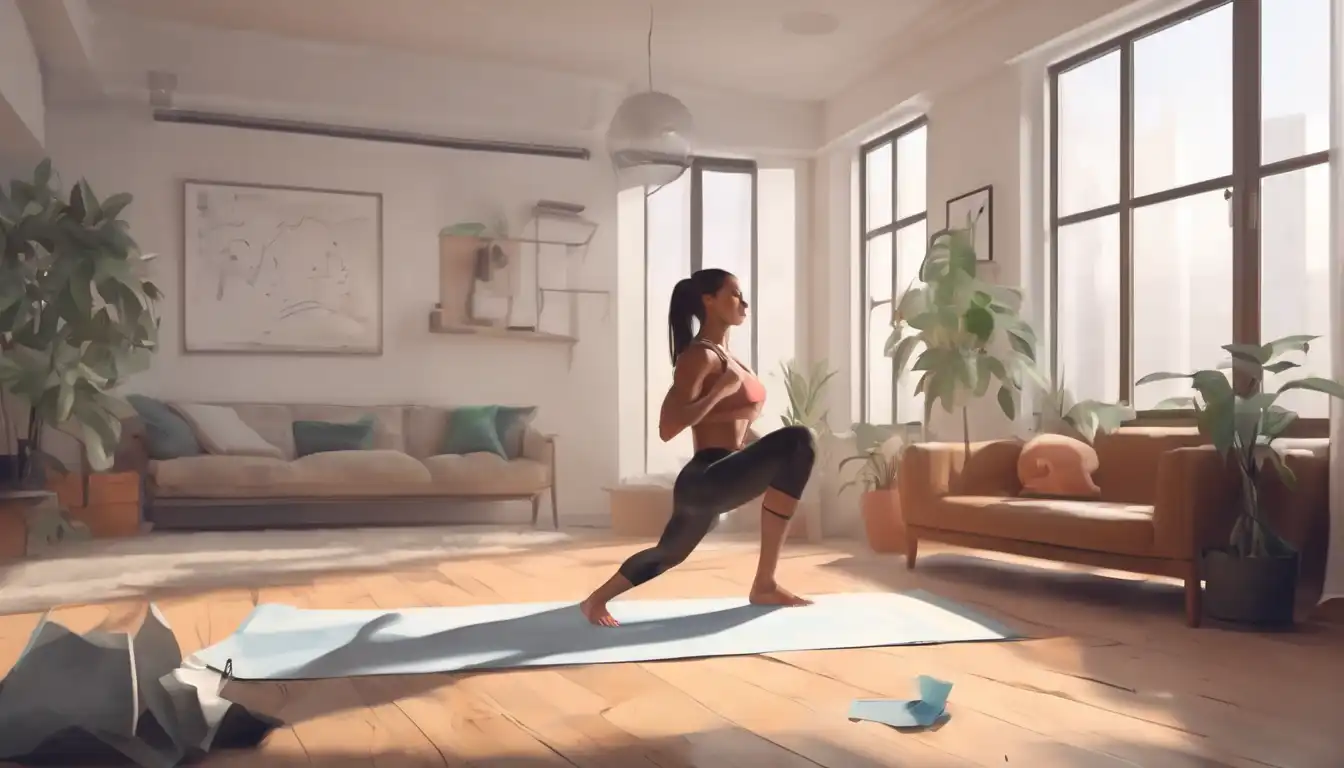Transform Your Fitness Journey with Zero Equipment
In today's fast-paced world, finding time to hit the gym can be challenging, but that shouldn't stop you from achieving your fitness goals. Effective home workouts with no equipment needed offer the perfect solution for busy individuals seeking convenient, cost-effective exercise options. Whether you're working with limited space, a tight budget, or simply prefer the privacy of home exercise, bodyweight training provides comprehensive fitness benefits without requiring any special gear.
Why Choose No-Equipment Workouts?
Bodyweight exercises have stood the test of time for good reason. They build functional strength that translates directly to real-world movements, improve balance and coordination, and can be modified for any fitness level. Unlike machine-based exercises that often isolate specific muscles, bodyweight movements engage multiple muscle groups simultaneously, leading to more efficient workouts and better overall fitness results.
The accessibility of no-equipment workouts makes them ideal for beginners and experienced athletes alike. You can perform these exercises in your living room, bedroom, or even a small apartment without worrying about storage space or expensive equipment costs. This approach to fitness emphasizes movement quality over quantity and teaches body awareness that carries over into daily activities.
Essential Bodyweight Exercises for Full-Body Fitness
Upper Body Strength Builders
Push-ups remain the cornerstone of upper body training for good reason. This classic exercise targets your chest, shoulders, triceps, and core simultaneously. Start with knee push-ups if you're new to this movement, gradually progressing to full push-ups as your strength improves. For variety, try wide-grip push-ups to emphasize chest development or diamond push-ups for greater triceps engagement.
Pike push-ups provide excellent shoulder development without weights. By positioning your hips high and creating an inverted V-shape with your body, you effectively target the shoulder muscles similar to overhead presses. This exercise builds the foundation for more advanced movements like handstand push-ups.
Lower Body Power Moves
Squats form the foundation of lower body training and can be performed anywhere. Focus on proper form: keep your chest up, back straight, and lower until your thighs are parallel to the floor. For added intensity, try jump squats or single-leg squats to challenge your balance and build explosive power.
Lunges target your quads, glutes, and hamstrings while improving stability. Forward lunges, reverse lunges, and walking lunges all provide slightly different benefits. Incorporate lateral lunges to work your inner and outer thighs, creating well-rounded leg development.
Core Strengthening Essentials
Planks represent one of the most effective core exercises available. The standard forearm plank engages your entire core, including deep stabilizing muscles. Progress to side planks to target obliques, or try plank variations like shoulder taps and plank jacks to increase the challenge.
Leg raises effectively target your lower abdominal muscles. Lying on your back with legs straight, slowly raise them toward the ceiling while keeping your lower back pressed into the floor. For an added challenge, try hanging leg raises if you have access to a sturdy bar or doorframe.
Creating Effective Workout Routines
Beginner-Friendly Circuit
If you're new to bodyweight training, start with this simple circuit: perform 10-15 repetitions of each exercise with minimal rest between movements. Complete 3-4 rounds with 60-90 seconds of rest between circuits.
- Bodyweight squats
- Push-ups (knee or standard)
- Plank (hold for 30 seconds)
- Glute bridges
- Bird dogs
Intermediate Challenge Routine
For those with some fitness experience, this circuit provides greater intensity: perform each exercise for 45 seconds followed by 15 seconds of rest. Complete 4-5 rounds.
- Jump squats
- Decline push-ups
- Walking lunges
- Mountain climbers
- Bicycle crunches
Advanced Full-Body Blast
Advanced exercisers can challenge themselves with this high-intensity circuit: perform each movement for 60 seconds with minimal transition time. Complete 5-6 rounds.
- Burpees
- Pistol squat progressions
- Handstand push-up progressions
- Plank to push-up transitions
- L-sit holds
Maximizing Your No-Equipment Workouts
Consistency proves more important than intensity when establishing a sustainable fitness routine. Aim to exercise 3-5 times per week, allowing adequate recovery between sessions. Listen to your body and adjust the intensity based on your energy levels and recovery capacity.
Progressive overload remains crucial for continued improvement. As exercises become easier, increase the challenge by adding repetitions, decreasing rest periods, or progressing to more difficult variations. Tracking your workouts helps maintain motivation and ensures you're consistently challenging yourself.
Proper nutrition and hydration significantly impact your workout results. Fuel your body with balanced meals containing adequate protein for muscle repair, complex carbohydrates for energy, and healthy fats for hormone production. Stay hydrated throughout the day, especially around your workout times.
Common Mistakes to Avoid
Many people compromise form for repetitions, increasing injury risk while reducing effectiveness. Focus on quality movement patterns rather than rushing through exercises. If you cannot maintain proper form, decrease the intensity or regress to an easier variation.
Neglecting warm-ups and cool-downs represents another common error. Spend 5-10 minutes performing dynamic stretches and light cardio before your workout, followed by static stretching afterward. This practice improves performance, enhances recovery, and reduces injury risk.
Overtraining can hinder progress rather than accelerate it. Allow 48 hours between intense workouts targeting the same muscle groups. Active recovery days featuring light walking, yoga, or mobility work promote blood flow without taxing your system.
Incorporating Variety and Progression
To prevent plateaus and maintain motivation, regularly introduce new exercises and training methods. Experiment with different rep ranges, tempos, and exercise combinations. Consider exploring other bodyweight training disciplines like yoga or calisthenics to develop new skills while enhancing fitness.
For those interested in expanding their home fitness options, consider exploring our guide to minimal equipment home gym setups that complement bodyweight training. Additionally, our article on optimal nutrition for home workouts provides valuable insights into fueling your fitness journey.
Remember that fitness represents a lifelong journey rather than a destination. Celebrate small victories, stay consistent, and enjoy the process of becoming stronger and more capable with each workout. With dedication and proper programming, no-equipment home workouts can deliver exceptional results that rival traditional gym training.
